Ertach Kernow - 200 years of the Coastguard in Cornwall
The early coastguard - The 15th of January marks the 200th anniversary of the formation of the coastguard. But even prior to that date the new coastguard establishment had an interesting past through earlier organisations that carried out similar work. Today Her Majesties Coastguard (HMCG) forms part of The Maritime and Coastguard Agency (MCA) an Executive Agency of the Department for Transport. This is a brief look at the activities of the coastguard during the early 19th century.
Perhaps the earliest ancestor of today’s coastguard were the officers appointed to collect customs duties. King Ethelred II had established at Billingsgate a tax on wine and in due course foreign merchants were given permission to trade in exchange for a portion of cargo. Later the Navigation Acts passed between 1381-1390 required English traders to ship their goods in English ships upon pain of seizure of their goods found in other vessels. These were later amended to create exceptions where no English vessels were available and again with the major addition that ship owners were allowed to take reasonable gains. Alterations, repeals and creation of new acts over the next few hundred years created a need for administration, protection and enforcement.
Charles II established the Board of Customs in 1671 with a number of sailing smacks were being employed by the customs in smuggling preventive work. These were supported from 1690 by Riding Officers patrolling the coastline, known as the Landguard. Despite the efforts of Parliament and the government inefficiency and corruption within the service allowed smugglers to run wild. By the mid-18th century smuggling was so rife that a coast blockade plan was adopted with far improved revenue cutters being employed. However, no matter how good the equipment and provisions provided were, this could not compensate for continued bribery, corruption and inefficiencies of the customs force and administration. With people such as Nelson and St Vincent improving the Royal Navy, this gradually started filtering through to the Customs service. In 1809 what became known as the Waterguard was established with increased numbers of revenue cruisers and boats, but again was overhauled in 1817 due to inefficiencies. This new Coast Blockade was entirely run by the Royal Navy even taking in control of the Landguard. By 1821 the cost of running the various duties and services with much duplication was half a million pounds. A Committee of Inquiry was launched with an initial suggestion that the force be known as the Coastguard and the whole operation simplified, with proper codes of conduct and regulation. Gradually, before it became part of their remit, the coastguard increasingly began the work of saving lives.
The primary purpose of the Coastguard in its early days was to stamp out smuggling for the benefit of revenue through taxation and also to protect local industry from cheap foreign imports. It would appear that behind the frontmen carrying out the smuggling there were huge numbers of people from all walks of life, including within the revenue services, interacting and benefiting through bribery and numerous other shenanigans.
To prevent corruption amongst the coastguard men they were moved around regularly to avoid integration within the local smuggling fraternity. However, not all revenue men were corrupt, and what follows is something from the working life of one Cornishman George Pappin, born in St Austell in 1785. In 1806 he joined his younger brother William aboard a Revenue Cutter named Hart, commanded by another Cornishman Captain Hugh Pearce. Hugh had been born at Kea in 1759 and was successful in his customs service career and as part of the future Waterguard. Promotion to command the Hart was due to action in 1798 where he helped capture the smuggling vessel Lottery containing 716 casks of spirits, mainly gin, off Land’s End. On his promotion Hugh went on to become Superintendent of the Revenue Waterguard at the Islands of Guernsey, Jersey, and Alderney.
Hart operated out of the Channel Islands between there and Lyme Regis for many years chasing and capturing smuggling vessels. An early success for Hugh, George and crew of the Hart was in 1807 when they captured the smuggling vessel Maria, taking her into Fowey with 400 ankers (approximately 4,000 gallons) of spirits onboard. There was prize money involved and this capture would have been most lucrative for the crew. This was a dangerous occupation as often the smuggling ships were well armed and would put up a fight to save themselves and their cargo. In fact, these vessels were sometimes better armed than the revenue cruisers with numerous carriage and swivel guns. There were instances recorded where the hunter became the hunted with the smugglers being so well armed they turned on the revenue cruiser. The Hart was armed with 12, 4 pounder carriage guns as well as swivel guns, muskets and cutlasses for the 15-man crew. Towards the end of her active life Hart was based at Portsmouth, when due to decay in 1817 she was retired and broken up. It was at that point that Hugh probably retired to his house in Polruan, where after a lingering illness he died on 16th June 1823. Hugh was buried at Lanteglos by Fowey Church where there is a monumental plaque commemorating him and his commitment to duty.
George was transferred to a shore station at Clovelly in 1817 where his first daughter was born in 1818. George’s work continued to be dangerous on land as at sea with smuggling gangs well-armed and committed to protecting their cargoes. The smugglers were crafty in the ways they operated in hiding their cargoes and the revenue men had to learn fast how to discover the contraband.
As with usual practice George was again transferred, this time to Newquay in April 1819. Newquay was at that time a small fishing hamlet adjacent to the slightly larger settlement of Towan within the manor of Towan Blystra. The population of the combined settlements was about 200 with some thirty cottages and part of the larger parish of St Columb Minor. Here the coastguard and their families would have made up a sizeable proportion of the overall population. Smuggling was rife and the somewhat sheltered area of the Gazelle became a favourite place to land and store contraband goods due to the caves and mine workings known as the Tea Caverns. It would be here that the Coastguard Lookout would be built to oversee this area and be a place of work for George over the following nearly three decades. As in many towns and settlements around Britain’s Coast, due to the fairly large contingent of revenue officers, the Admiralty would build rows of cottages for these men and their families. At Newquay a row was built in 1825 in what became known as Fore Street, where the carpark is now. It would be here that George and his wife Elizabeth brought up their ten children.
It was very unusual for coastguard men to stay in any one place for a great length of time. However, George would become second in command at Newquay and be involved in the capture of the notorious smuggling vessel Jean Baptiste in 1833. His prize money for this was £100 a very substantial sum in those days. The vessel was seen offshore as if waiting to run in a contraband cargo and later anchored close to the Chick Rock. The coastguard surprised her, capturing the crew then sailed the vessel to Padstow where the goods were unload including 293 tubs of brandy. The vessel was then towed out to sea and set on fire, however the master of Jean Baptiste, named Tirhard, managed to escape on the way to Padstow. The other six crew were fined £100 each but due to non-payment were enrolled in the Royal Navy at Plymouth.
George worked for the revenue service for 40 years and retired on a pension of 40 guineas per annum. He was able to build property from his prize money that would remain in the family for over 100 years and is still in existence today. He died in 1868 aged 84 well loved and left eight living children and over 50 grandchildren. His descendants alone made up 15% of the population of Newquay in the 1881 census, many would have a major impact on Newquay into the future. His brother William ended his days in Mullion, how different things may have been if the brothers station appointments had been reversed by the clerk completing a form over 200 years ago.
There continued to be vessels employed throughout the 19th century and later when iron steam ships became the frontline vessels of the Royal Navy, older vessels were cut down from say 74 guns to 60 or less to become guard ships. Falmouth had a guard ship and throughout Cornwall from 1841 to 1901 there were fifty separate stations around the Cornish coastline. In addition, there were a further five based on the Isles of Scilly. Each of the smaller coastguard stations would have had boats to help them intercept smugglers coming ashore. The captured contraband was held in customs houses, and it was known that crews from larger smuggling ships would attack these customs houses to retrieve their captured goods.
The reduction of taxation on imports gradually led to the decline in smuggling as it became less profitable. This led to the job of coastguard men increasingly becoming one of saving life alongside rescuing cargo. This will be covered in a later article.
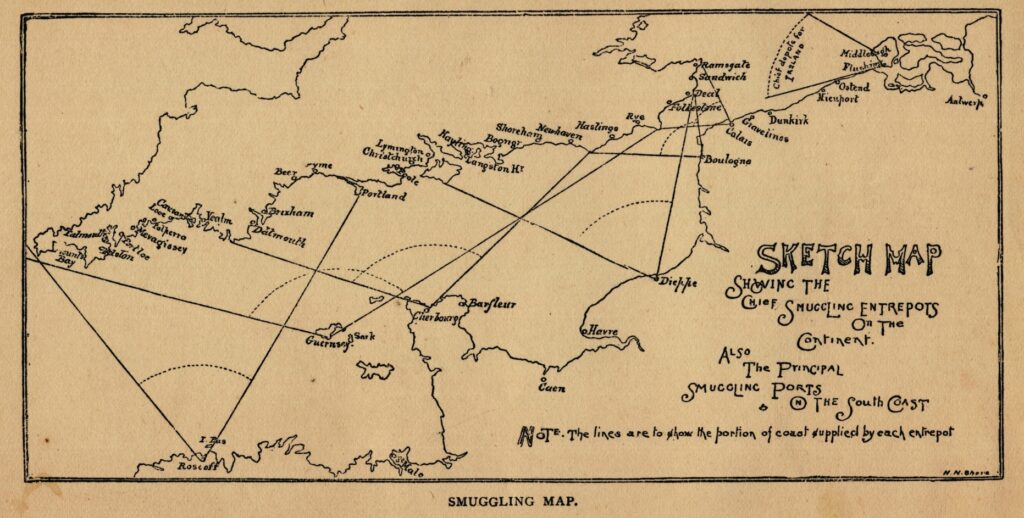
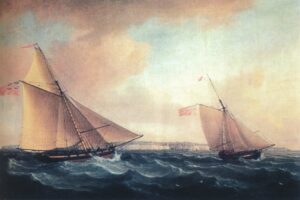
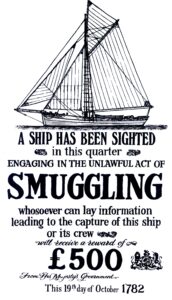
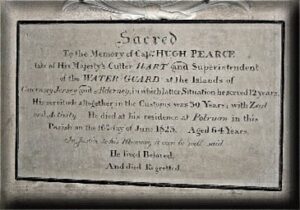
![Hart Revenue Cutter [Hugh Pearce's decanter] Hart Revenue Cutter [Hugh Pearce's decanter]](https://www.cornwallheritage.com/wp-content/uploads/2022/01/Hart-Revenue-Cutter-Hugh-Pearces-decanter-537x1024.jpg)
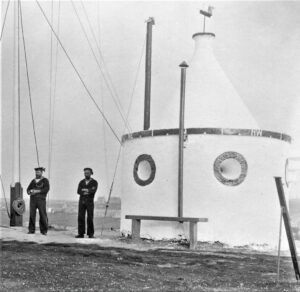
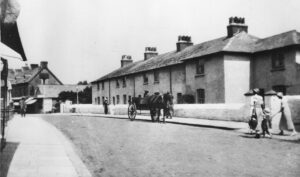
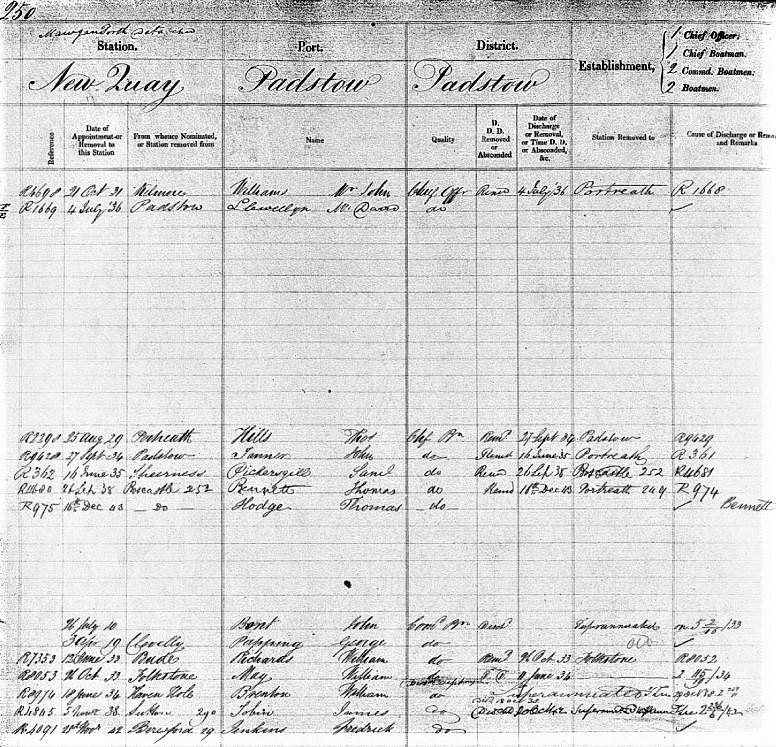
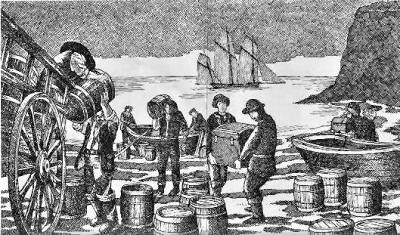
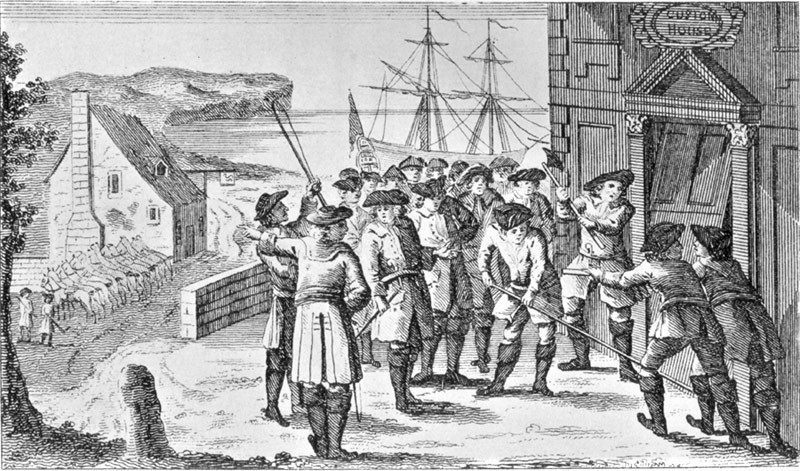
![[81] Voice - Ertach Kernow- 120121A 200 Years of the Coastguard [S] Ertach Kernow - 200 Years of the Coastguard](https://www.cornwallheritage.com/wp-content/uploads/2022/01/81-Voice-Ertach-Kernow-120121A-200-Years-of-the-Coastguard-S-227x300.jpg)
![[81] Voice - Ertach Kernow- 120121B 200 Years of the Coastguard [S] Ertach Kernow - 200 Years of the Coastguard](https://www.cornwallheritage.com/wp-content/uploads/2022/01/81-Voice-Ertach-Kernow-120121B-200-Years-of-the-Coastguard-S-225x300.jpg)
![[81] Ertach Kernow Heritage Column - 12 January 2022 - Studying our archaeology Ertach Kernow Heritage Column - Studying our archaeology](https://www.cornwallheritage.com/wp-content/uploads/2022/01/81-Ertach-Kernow-Heritage-Column-12-January-2022-Studying-our-archaeology-1-298x300.jpg)